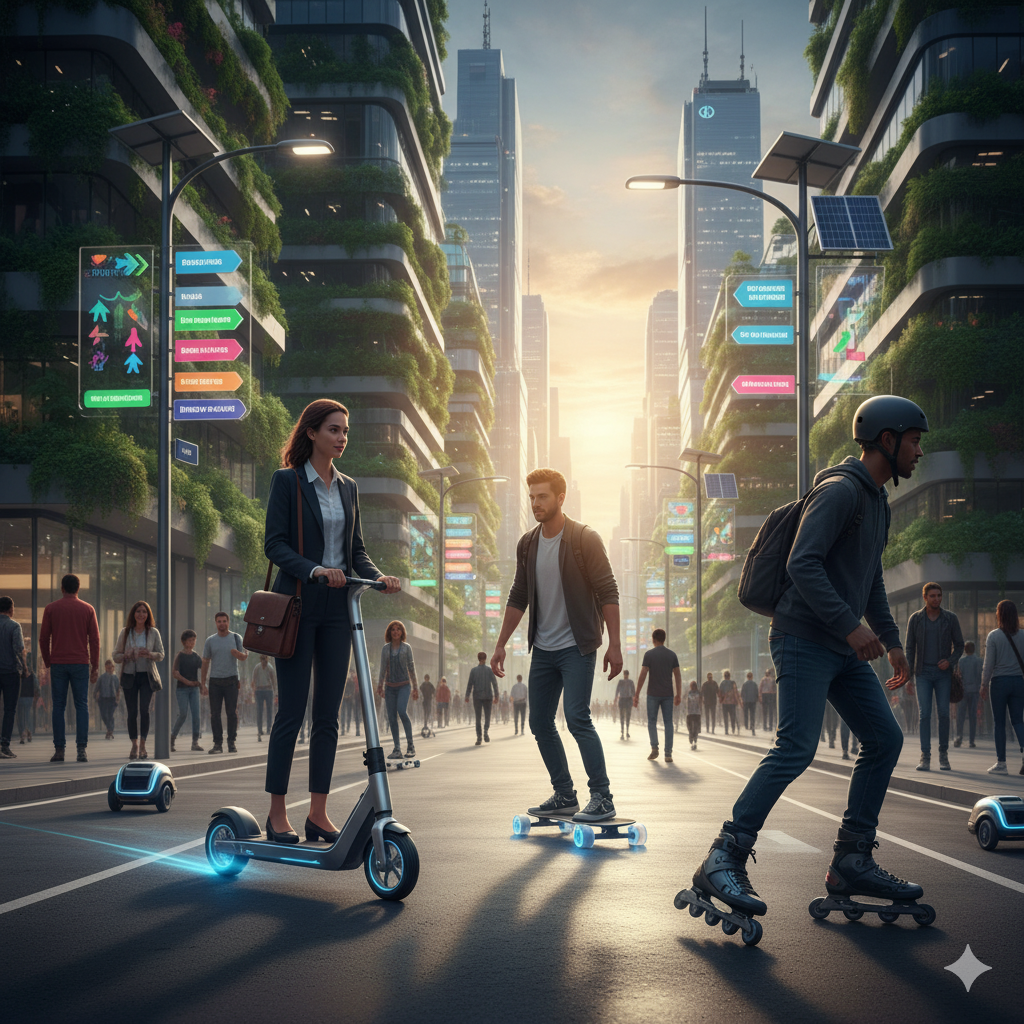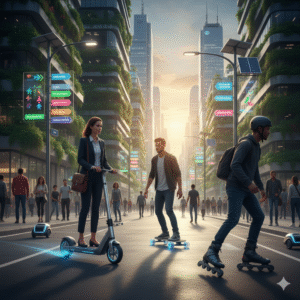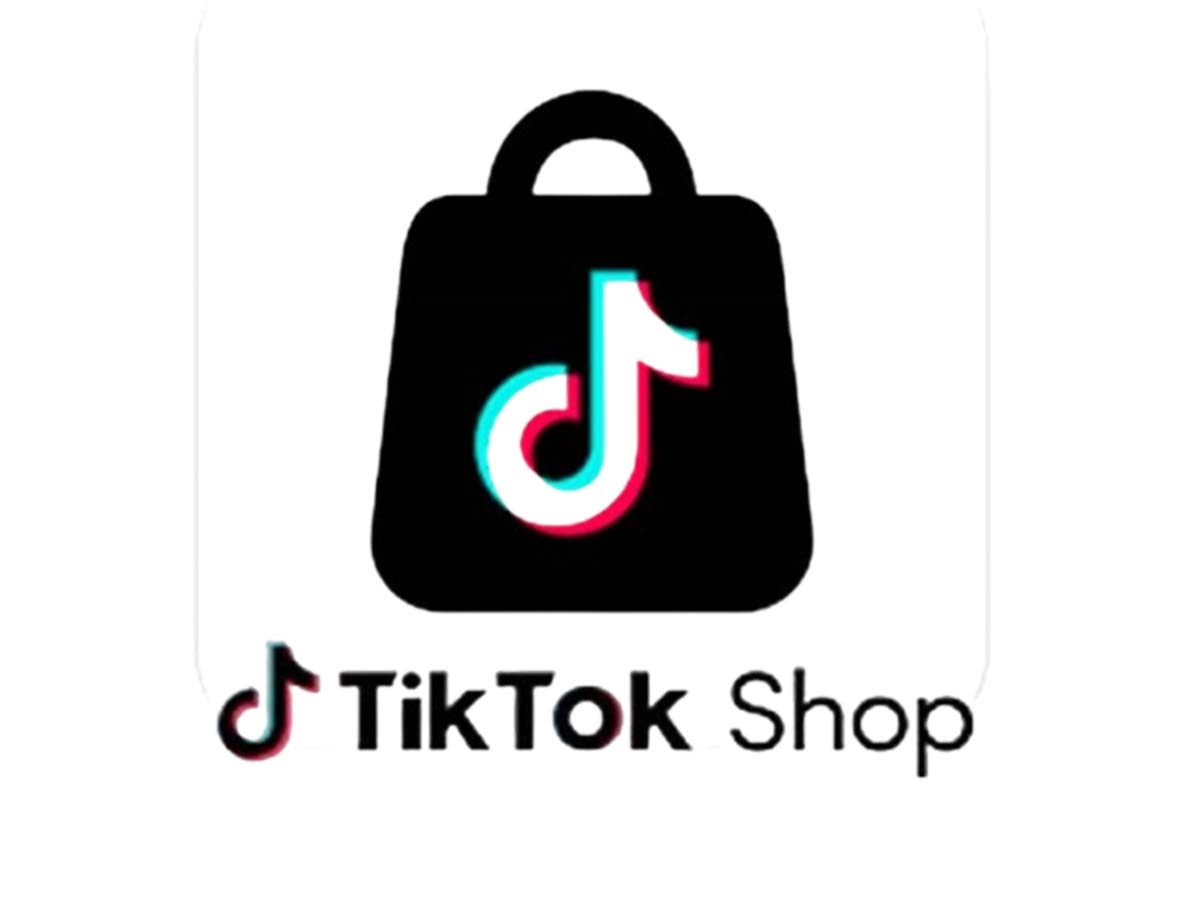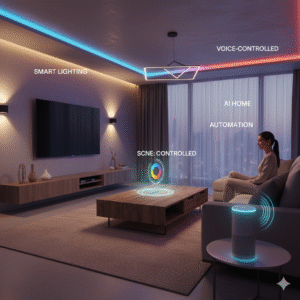AI-Powered Translation Devices & Travel Gadgets — breaking language and boundary barriers
1. Introduction & Why AI Translation Devices Matter
In our increasingly globalized world, being able to communicate across language divides is more important than ever. Whether you’re traveling, doing business internationally, connecting with people from other cultures, or simply exploring, language can be a barrier. Traditional translation apps are powerful tools, but they often require smartphones, reliable internet, and frequent switching between devices or apps.
That’s where AI-powered translation devices and specialized travel gadgets come in. These are portable, optimized for voice-to-voice or voice-to-text translation; often more natural, more reliable in real-time, with better hardware for noisy environments and with offline capabilities. These devices promise to break down language barriers in a more seamless, less interruptive way.
Here are some reasons why they’re increasingly valuable:
- Real-time communication without needing a smartphone or switching apps
- Better speech recognition, even with accents, dialects, ambient noise
- Offline modes for places without reliable internet
- Enhanced privacy (less cloud reliance)
- Hands-free or wearable options (earbuds, glasses) make conversations more natural
2. How AI Translation Technology Works
To appreciate what these devices can do—and where they fall short—it helps to know the technical foundation.
2.1 Speech Recognition (ASR: Automatic Speech Recognition)
First, the spoken words must be captured and converted to text. This involves:
- Microphone quality and hardware (sensitivity, noise cancellation)
- Ambient noise handling
- Accents, dialects, clarity of speech
2.2 Language Models & Machine Translation (MT)
Once speech is recognized, the text must be translated to another language. This is done using machine translation models, which may be:
- Cloud-based: Big models, large data sets, often very accurate but require internet
- On-device: Smaller models optimized for size and speed, can work offline, but might have trade-offs in accuracy, vocabulary, nuance
Modern AI translation devices may use neural machine translation (NMT), sometimes leveraging smaller or optimized LLMs (large language models) for speed.
2.3 Text to Speech (TTS)
After translating text, the target side needs to convert the translated text into spoken output:
- Naturalness of voice matters (tone, speed, clarity)
- Synchronization (how fast after recognition + translation does output occur)
2.4 Latency, Accuracy, & Quality Metrics
Key metrics for user experience:
- Latency (delay) between speech and translation
- Accuracy: how well does it handle idioms, slang, grammar, context
- Number of supported languages & dialects
- Offline vs online support
2.5 Hardware & Form Factors
- Microphones & speakers (or earbuds) matter: quality and performance in noisy surroundings
- Screen/display: for showing text, interface, photo translation (signs, menus)
- Battery life: important for travel & remote areas
- Connectivity: WiFi, mobile data, hotspots, Bluetooth
3. Key Features & What to Look for
When considering an AI translation device or gadget for travel or daily use, these are the features and criteria you should evaluate.
| Feature | Why It Matters |
|---|---|
| Language Coverage | The more languages and dialects supported, the more versatile the device; also, how natural or slang / accent sensitivity is matters. |
| Offline Functionality | For travel to places without stable internet; devices that allow offline translation are extremely useful. |
| Latency | A small delay can break conversational flow; fast devices make translation feel more natural. |
| Accuracy & Natural Output | Beyond literal translation—handling idioms, colloquial speech, preserving meaning. |
| Ambient Noise Handling & Microphones | Travel often involves noisy environments (streets, airports, markets). Good devices filter noise well. |
| Form Factor & Portability | Pocket-sized, lightweight, wearable (earbuds / glasses) or handheld; ruggedness; ease of carrying. |
| Display / Camera / Photo Translation | Ability to translate signs, menus, texts via camera/photo is very helpful. |
| Battery Life & Power Options | Longer battery life means less worry; ability to recharge easily while traveling. |
| Connectivity & Data Plans | Does it require mobile data? Is global data included? Is hotspot or built-in SIM possible? |
| Privacy & Security | On-device translation vs cloud; how data is handled; is voice data stored; encryption etc. |
| User Interface & Ease of Use | How intuitive is it; physical buttons; screen; modes (hands-free, bidirectional, etc.). |
| Durability & Support | Build quality; after-sales support; firmware updates; compatibility with future software changes. |
4. Top AI Translation Devices & Gadgets in 2025
Here are several leading devices and gadgets in the translation space, and what they offer. These are based on reviews, features, and current market offerings.
| Device / Gadget | Highlights / Strengths | Trade-offs / What Users should know |
|---|---|---|
| Timekettle T1 Handheld Translator | Supports many languages; strong features like photo translation; some offline functionality. Lightweight and larger screen; good voice recognition. Learn Languages From Home | Offline mode may cover fewer language pairs; performance may drop in very noisy settings. Battery life varies; expensive. |
| ANFIER M6 Translator Earbuds | Earbud form factor: hands-free conversation; real-time translation in many languages; stylish design. Smartdataweek | Smaller device may have limitations in speaker clarity; battery life may be shorter when in use; may require charging case etc. |
| iFLYTEK Smart Translator | Very strong offline support (dozens of languages); good accuracy; photo/text translation; reliable brand. UMEVO | Price tends to be higher; offline translation tends to have tradeoffs vs cloud versions, especially in rarer language pairs. |
| Vasco Translator V4 | Offers many languages offline; built-in connectivity in many models; designed specifically for travel; rugged and easy to use. UMEVO | Bulkier than some earbuds; online features require data; when many languages are active battery usage goes up. |
| Pocketalk (various models, e.g. S, Classic) | Very popular among travellers; clear UI; good battery; good language support; camera/photo translation; dual-mic for noise suppression. WhatsOnTech+1 | Reliance on data for best performance; offline modes are often limited; size may be larger than minimal gadgets like earbuds. |
| Langogo Genesis AI Translator | Combines translation + connectivity (hotspot) in some versions; good range of languages; useful features for travel. WearxAi | Hotspot or connectivity features may raise cost; battery demands may be higher; may be heavier. |
| WT2 Edge Translator Earbuds | True hands-free translation using earbuds; discrete; useful for conversations. WearxAi | Earbud audio fidelity / speaker clarity may be limited; latency / translation errors may get worse in very noisy or simultaneous speaking scenarios. |
| Pocketalk S Video Translator | Adds a camera / video component to translate text in images; useful for menus / signs etc. Easy to use interface. One Fantastic Shop | Cameras may have low resolution or struggle in low light; may be bulkier; battery usage higher when using camera/video. |
5. Use Cases: Travel, Business, Culture, Emergencies
AI translation devices shine in many real-life scenarios. Here are some of the major use cases, and what features are especially useful in each.
| Use Case | What Matters Most | Ideal Device Features |
|---|---|---|
| Tourism / Travel | Translate signs, menus; have conversational ability; work offline; portability; long battery. | Photo translation (camera); offline support; quiet form factor; dual-mic or noise cancellation; lightweight. |
| Business / Conferences / Negotiations | Accuracy, low latency, ability to handle specialized vocabulary, reliability; possibly larger devices. | High accuracy in cloud + offline fallback; good audio input; professional build; privacy; multiple languages / dialects; perhaps also display transcript. |
| Cultural Immersion / Local Life | Natural conversation; real-time back-and-forth; handling local slang or idioms; wearable options. | Earbud or wearable translation; on-device model; ability to learn or adjust for accent; modes for conversation. |
| Emergencies / Medical / Safety | Reliable connection; ability to get meaning across in critical situations; offline backup. | Durable devices; offline translation; quick boot; hands-free operation; clear audio even in stress/noise. |
| Remote / Off-Grid Travel | Lack of reliable internet; power issues; need for ruggedness. | Offline mode, longer battery life, solar chargers or portable power-banks; durable hardware. |
| Education & Language Learning | Seeing translations, hearing pronunciation; adjusting speed; feedback. | Display + speaker; slow mode / repeat; ability to record, see text; ability to translate entire sentences / paragraphs. |
6. Offline vs Online Translation: Pros & Cons
One of the main trade-offs in these devices is whether translation is done in the cloud (online) or locally (offline). Here’s a comparison.
| Aspect | Online Translation | Offline Translation |
|---|---|---|
| Accuracy & Vocabulary | Usually higher: more data, up to date models, bigger language coverage, better handling of slang / updates / idioms. | May lag behind in rare languages or idioms; smaller models; limited updates; may not cover all pairs. |
| Latency / Speed | If connection is good, may be fast; network lag can slow it. | Usually faster in steady use, because no network delays; but device model size may slow on-device processing. |
| Dependence on Internet / Connectivity | Need reliable network; expensive or unavailable in remote areas; can incur roaming/data costs. | Works without internet; good for travel, remote places. |
| Privacy & Security | Data typically sent to servers; risk of data exposure; depends on provider policies. | More private: data stays device; less exposure. |
| Model Updates / Improvements | Easier to push updates, new languages, better translations. | Updating offline models may require downloads; model size limits and hardware constraints. |
| Power / Hardware Requirements | Device hardware may be simpler; cloud does heavy lifting. But using network uses power. | More on-device compute demands: stronger CPU / AI accelerator, more battery consumption. |
7. Challenges, Limitations, & Ethical Considerations
While the technology is advancing fast, there are still many challenges to be aware of.
7.1 Accuracy Issues: Context, Slang, Dialects
- Machine translation often fails on idioms, cultural references, slang, or regional dialects.
- Some languages are under-represented in datasets, which affects quality.
7.2 Latency, Mishearing, & Speech Overlap
- In rapid conversation where people talk over each other, devices may struggle to keep up.
- Ambient noise or accents may reduce speech recognition accuracy.
7.3 Hardware Constraints: Battery, Size, Heat
- AI inference on device uses power; small devices have limited space for powerful processors and cooling.
- Screen/camera modules add size, weight, and power draw.
7.4 Internet & Data Costs
- For online modes, data usage or roaming costs can get high.
- Sometimes network availability is unreliable.
7.5 Privacy & Security
- Voice data being transmitted to servers; storage of transcripts; how the data is used.
- GDPR, privacy laws differ by country. Device makers must be transparent and offer controls.
7.6 Ethical / Cultural Sensitivity
- Misinterpretation can cause offense. Translation isn’t just word for word—context and tone matter.
- Things like gendered language, politeness levels, local norms need careful handling.
7.7 Over-Reliance & Erosion of Learning
- People might rely heavily on devices, potentially reducing motivation to learn languages. There’s still value in learning basic phrases, cultural understanding.
8. Future Trends: What’s Coming Next
What are we likely to see in the next few years? Many innovations are already underway, and AI translation devices are evolving rapidly.
8.1 Stronger On-Device Models & Smaller AI Footprint
- Research is pushing to make translation models smaller, more efficient, so they can run locally with near-cloud accuracy.
- Examples include optimization methods (pruning, quantization), dynamic computing layers.
8.2 Wearables & Ambient Translation
- Devices like earbuds that translate as you speak; smart glasses that show translated text or overlay subtitles.
- Hands-free, more natural interaction.
8.3 Multi-Modal Translation
- Translating not just speech, but combining voice + image + text. E.g. point your camera at a sign, get translation; combining gestures, lip reading perhaps.
8.4 AI Combo: Personalization & Learning
- Devices that learn your accent, your frequent phrases, style of speaking.
- Custom glossaries (for business, technical language).
8.5 Real-Time Business & Conference Tools
- Larger portable or wearable devices for business meetings with many speakers. Real-time transcription, translation, and context.
8.6 Improved Language Coverage & Minority Languages
- More support for languages/dialects with less data; more inclusive datasets; more coverage of under-served languages.
8.7 Privacy Enhancements & Local Processing
- More on-device processing; encryption; anonymization; better privacy policies.
8.8 Integration with Travel Tech & IoT
- Translation devices integrating with other travel gadgets: wearables, AR glasses, smart headphones, travel assistants.
- Devices serving multiple functions (translator + hotspot + travel guide + assistant etc.).
9. Practical Buying Tips: How to Choose the Right Device
Here are practical tips and questions to ask yourself when choosing a translation gadget:
- Which languages / dialects do you need?
- Check language pairs, offline availability.
- Do you need offline mode?
- For remote travel or places with poor internet, this is essential.
- What form factor do you prefer?
- Handheld, earbuds, glasses, stationary devices? Think about portability vs convenience.
- How important is latency / speed?
- If you want real-time conversations, fast response times matter.
- Microphone/speaker quality & noise handling
- If you’ll be in noisy environments, better mics and noise cancellation are crucial.
- Display / camera for text/image translation
- For reading signs, menus, etc., having camera + text translation is very useful.
- Battery life & power options
- See how many hours usage, standby; whether charging is easy on the go.
- Connectivity & extras (hotspot, SIM, apps)
- Some devices also provide internet connectivity / travel assistance.
- Privacy & data policies
- Is translation done locally or via company servers; how are transcripts stored or handled?
- Durability & support
- Build quality; how well it handles travel (drops, weather, etc.); warranty & firmware updates.
- Cost vs value
- Good devices can be costly; ensure features match your use-case rather than paying for unnecessary specs.
10. Conclusion
AI-powered translation devices are transforming how we cross language barriers. From handheld translators to earbuds and wearables, these gadgets are making it easier to speak, understand, and connect—whether it’s in busy markets, remote villages, or boardrooms.
While no device is perfect, many now come close enough to make real conversations possible, especially when you pick the right tool for your needs: one with the right languages, good offline capability, decent hardware, and user-friendly design.
If you travel frequently, do international business, or just want to connect better with people from other cultures, investing in a translator device can save you time, frustration, and help you avoid misunderstandings. And with rapid improvements in AI, we can expect devices to get more accurate, more capable, more private—and ever more seamless.
Share this content:














Post Comment